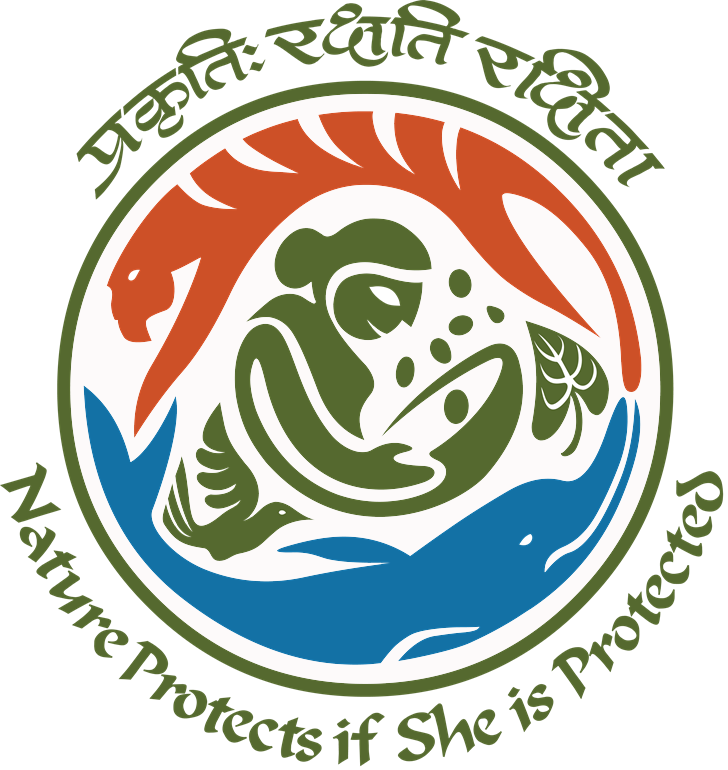30TH ANNIVERSARY OF THE VIENNA CONVENTION AND 21ST INTERNATIONAL DAY FOR THE PRESERVATION OF THE OZONE LAYER
Celebrated on 16th September, 2015 at Stein Auditorium, Convention Centre, India Habitat Centre, Lodhi Road, New Delhi, India
The world community recognized the adverse effects of stratospheric ozone depletion as early as in mid-seventies. Subsequently, the scientific discovery by the Noble Laureates Mario Molina and Sherwood Roland confirmed that the depletion is due to the man-made synthetic chemicals containing chlorine and bromine atoms which destroys the stratospheric ozone and resulting in increased transmission of Ultraviolet-B (UV-B) radiations on the Earth surface. The increased UV-B radiations endanger human health for example skin-cancer, eye-cataracts, weakening of human immune system and effects crops and natural eco-system. This led to the signing of the Vienna Convention for the Protection of the Ozone layer on 22nd March, 1985 and the Montreal Protocol on Substances that Deplete the Ozone layer on 16th September, 1987 for the protection of the Ozone layer.
The United Nations General Assembly on 23.1.1995 adopted a resolution 49/114 which proclaims 16th September as the International Day for the Preservation of the Ozone layer, to commemorate the signing of the Montreal Protocol on Substances that Deplete the Ozone layer, which was signed on 16th September, 1987. Since 1995, 16th September of every year is celebrated as the International Day for the Preservation of the Ozone Layer by the Parties to the Montreal Protocol. India being a Party to the Montreal Protocol, has been celebrating the International Day for the Preservation of the Ozone Layer every year.
The Montreal Protocol on Substances that Deplete the Ozone layer has been recognized as the most successful environmental treaty in history. The Protocol has been universally ratified and now all the countries of the world are Parties to the Montreal Protocol. The Protocol in last 28 years of its operation, with extraordinary international cooperation has led to not only the phase-out of production and consumption of several Ozone Depleting Substances (ODSs) and put the Ozone layer on path of recovery but has also contributed significantly to protect the global climate system. The Montreal Protocol on Substances that Deplete the Ozone layer has so far been successful in meeting the targets on phasing out ODSs. As a result, the abundance of ODSs in the atmosphere is declining and the Ozone layer is expected to recover pre-1980 level around the middle of this century or little later.
The key factor for the successful achievement was that the developed countries acknowledged their historic responsibility for production, consumption and emissions of ODSs that had led to the Ozone hole. The developing countries took on commitments for phase-out of ODSs. Such common but differentiated responsibilities led to the success of the Montreal Protocol which can now serve as an example of excellent international cooperation for addressing other environmental challenges.
India became a Party to the Vienna Convention for the Protection of the Ozone layer as early as on 18th March, 1991 and the Montreal Protocol on Substances that Deplete the Ozone layer on 19th June, 1992 and has ratified all the amendments to the Montreal Protocol.
Since then, India has played a key role in negotiation of the Protocol and implementation of phase-out of ODSs as per the Montreal Protocol schedule by adopting various policy measures, including National Awareness Campaign. Awareness of Ozone issues is the key to promote switching over to non-ODS technologies in the industry. In accordance with the UN resolution, the Ozone Cell, Ministry of Environment, Forest and Climate Change (MoEF&CC), Government of India has been celebrating the International Day for the Preservation of the Ozone layer since 1995 at National and State levels.
The year 2015 marks the 30th anniversary of the Vienna Convention for the Protection of the Ozone Layer, an important milestone in the protection of the Ozone layer. The theme for the celebration of the anniversary and this year’s International Day for the Preservation of the Ozone layer is “30 Years of Healing the Ozone Together”.The theme is supported by the slogan,“Ozone: All there is between you and UV.” The theme highlights the collective efforts of the Parties to the Vienna Convention and the Montreal Protocol in protecting the ozone layer over the past three decades and the supporting slogan signifies the importance of the ozone layer in protecting life on Earth from the harmful effects of UV-B radiation. The Ozone Cell, MoEF&CC, Government of India celebrated the 30th anniversary of the Vienna Convention and the 21stInternational Ozone Day on 16th September, 2015 at Stein Auditorium, Convention Centre, India Habitat Centre, Lodhi Road, New Delhi, India. Shri Prakash Javadekar, Hon’ble Minister of State for Environment, Forest and Climate Change (Independent Charge) Government of India was the Chief Guest.
On the occasion of the 21st International Day for the Preservation of the Ozone layer, the Ozone Cell, MoEF&CC organized the following activities:
(a) Painting, poster, Slogan writing competitions for school children. (b) Publication of a poster, painting and sticker for distribution to industry, institutions, Government Departments, schools and students and others with a view to raise public awareness. (c) Publication of booklet titled “The Montreal Protocol : India’s Success Story” highlighting the initiatives undertaken and achievements made by the Ozone Cell, MoEF&CC, Government of India, on implementation of the Montreal Protocol in India.
Over 1300 students from 172 schools from Delhi and National Capital Region actively participated in the competitions organized by the Ozone Cell, MoEF&CC.
The winners of the competitions in various categories were presented awards comprising of cash award, mementoes and merit certificates at the function organized on the occasion of the 21st International Day for the Preservation of the Ozone layer.



